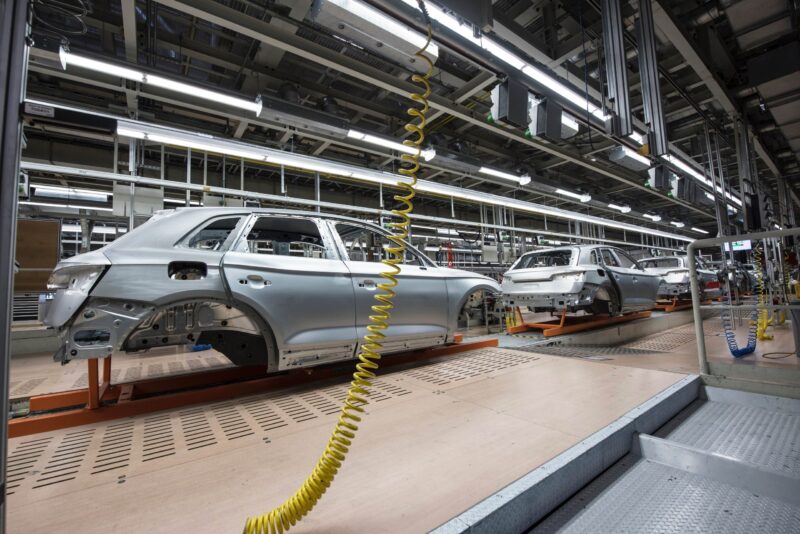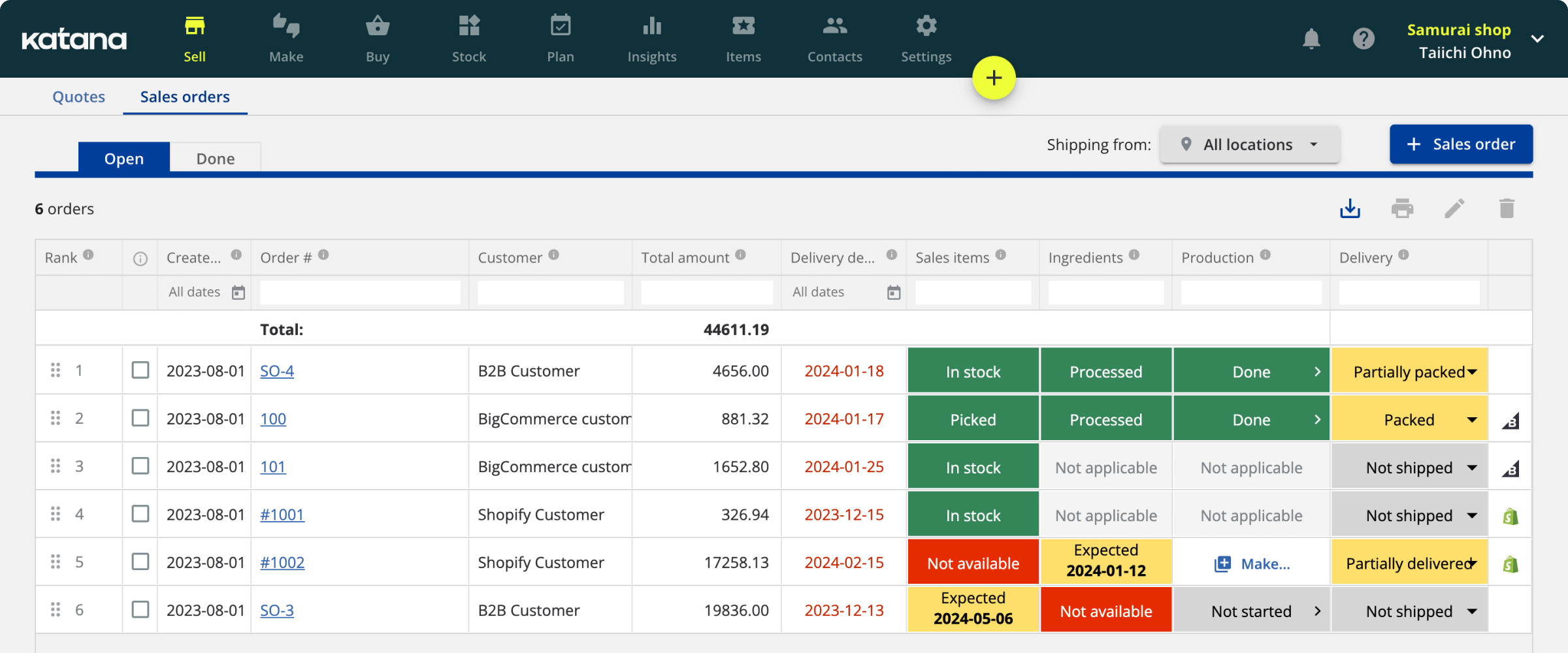
Better raw materials management, so you can minimize waste, and innovate better
Katana’s manufacturing ERP software gives you clarity when you need it most. Katana allows you to use your engineering bill of materials to track production quality in real time and get the next-gen batch and lot tracking features for optimal warehouse management.
Features
Upgrade productivity and align all of your teams with features designed to give you total visibility
Get a comprehensive live look at your automotive and boating business with features that will keep your teams and products always moving. Avoid bottlenecks and unnecessary stockouts with Katana’s ERP solution.
The ideal automotive ERP system to manufacture and distribute automotive and industrial machinery
Wherever you want to manage your manufacturing operations from the cloud or from a physical store, Katana has you covered. You’ll be able to manage your automotive inventory, production processes, and finances — all from one place.
Advanced automotive machinery requires immense precision and high production quality while maintaining quality control and meeting customer demands. Katana’s automotive ERP system gives you all that and complete control over your manufacturing processes.

The vision for Katana’s software comes from the automotive industry
In case you’ve never read our ‘About Us‘ page, you may not know that our name Katana itself is an homage to the lean manufacturing approach of Toyota – hence choosing a traditional Japanese weapon for our name in tribute. And we use this lean approach to create our ERP system which in turn can make life simpler for manufacturers across the world.
In the scope of automotive and industrial manufacturing, you’re likely to be making and selling products across a big scope of price ranges, and you may need diverse deployment options for both creation and delivery. Here are just a few of the features of Katana’s cloud inventory software to keep your global automotive business running smoothly:
- Super detailed bills of materials — Know your lead time for every product by formatting and customizing as many BOMs as you require for each and every product you offer and maintain a consistent quality management
- Smart inventory management — Your materials requirements planning can step up with Katana, as you can set specific reorder points for all of your raw materials, so you never have building supply problems
- Integrations and custom workflows — Sync your inventory data with hundreds of e-commerce, shipping, accounting, and reporting platforms
Ensure a consistent supply of all the materials you need
As a manufacturer, you know firsthand how important it is to ensure a consistent supply of stock and raw materials. If you have that in place, you are able to offer support for any production model – it doesn’t even matter if your business prefers make-to-stock or make-to-order.
Katana helps you connect with the sales and automation platforms while bringing all the data together for smooth financial management. It’s the automotive ERP system that will make you ask yourself why were you haggling with outdated Excel spreadsheets or legacy systems anyway.
One of the best parts of Katana is that you don’t need to be some kind of specialist ‘ERP implementer’ to get started —you can be up and running in days with our friendly software, expert ERP implementers, and vast Knowledge Base.
Integrate with the best e-commerce,
accounting, reporting, and CRM
software out there
Create custom API integrations
Use Katana’s open API to create custom workflows and connect to apps beyond our list of integrations. Automate data transfers between the services you use to level up efficiency. Take a look at our API documentation to learn more.
Automotive ERP System FAQs
There are a few critical differences between manufacturing resource planning (MRP) software and enterprise resource planning (ERP) software that manufacturers should be aware of when choosing which type of software to use for their business.
MRP software is designed specifically for manufacturing organizations and therefore contains many features that are geared toward streamlining manufacturing processes. ERP software is designed to give each company a more flexible and comprehensive platform, as managers can use ERP integrations to optimize different nuances of production, sales, reporting, or shipping operations.
Another key difference between MRP and ERP software is how they handle inventory. MRPs use a system called materials requirements planning (MRP) to track inventory levels and generate reports on what needs to be produced. On the other hand, ERP solutions use enterprise asset management (EAM) system to track inventory levels and generate reports.
Finally, MRP software is typically installed on-premise, while ERP software is usually offered as a cloud-based solution. This means that MRP software requires a more significant upfront investment and gives you more control over the software and its use. On the other hand, ERP cloud software is typically less expensive and can be accessed from anywhere with an internet connection.
The time it takes to implement an ERP solution can vary depending on the size and complexity of your organization. Also, it depends on how much customization you need to optimize your business.
Smaller companies may implement ERPs within days or a week. Mid-sized companies generally require at least a few weeks or more time.
Get visibility over your sales and stock
Wave goodbye to uncertainty by using Katana Cloud Inventory for total inventory control
